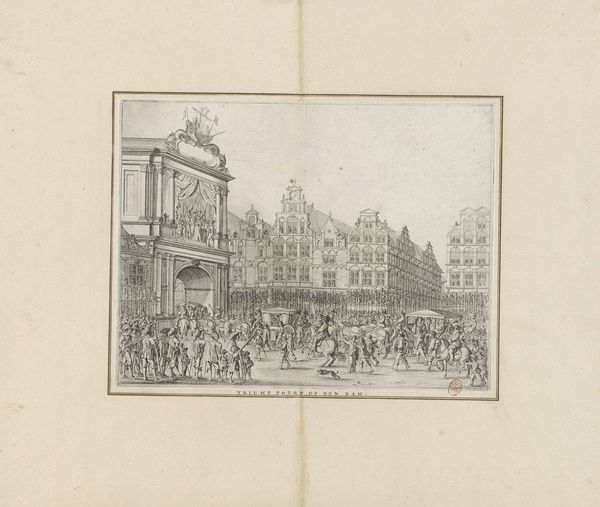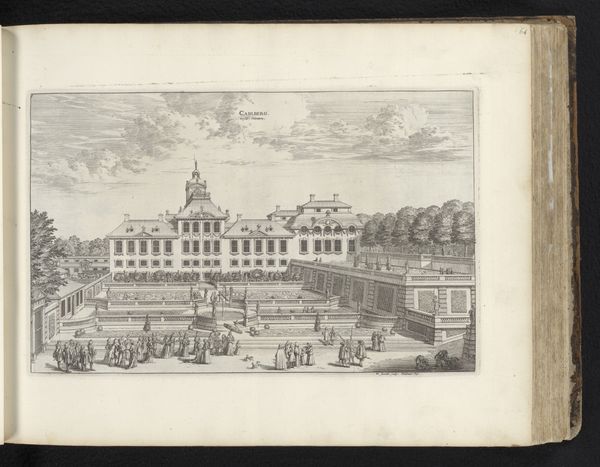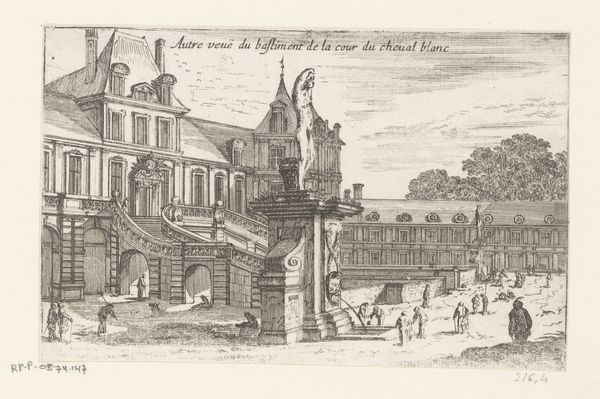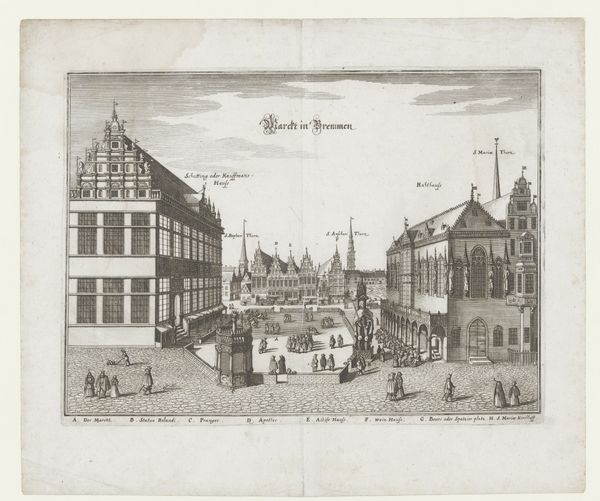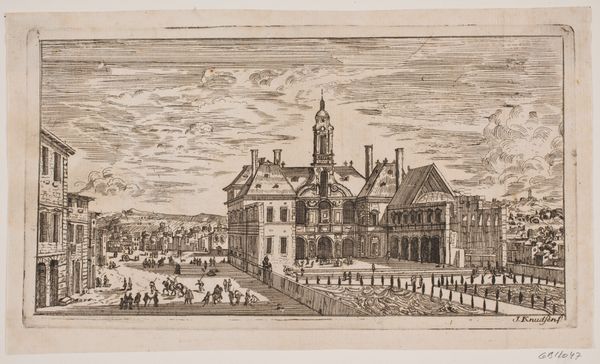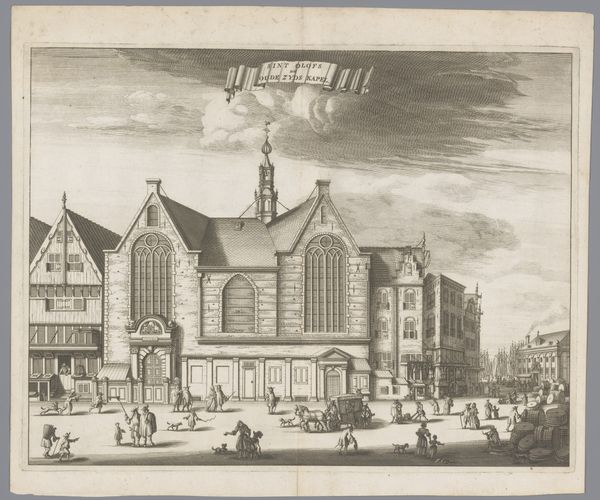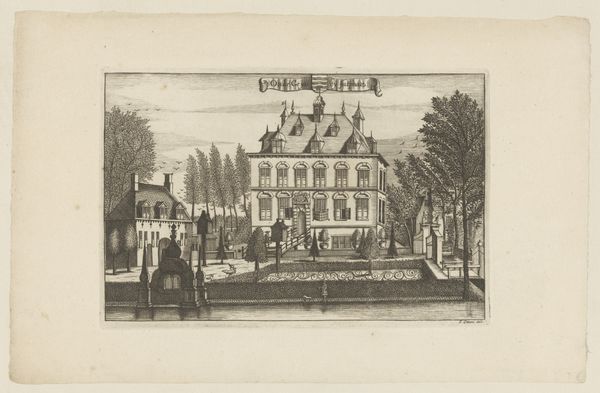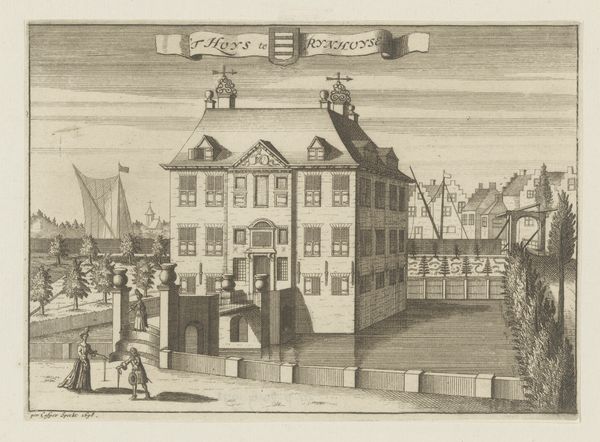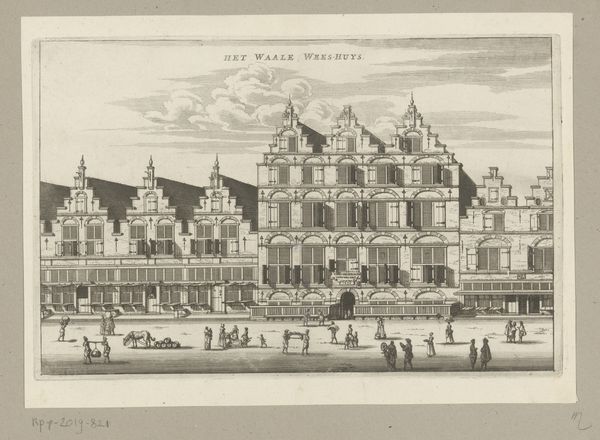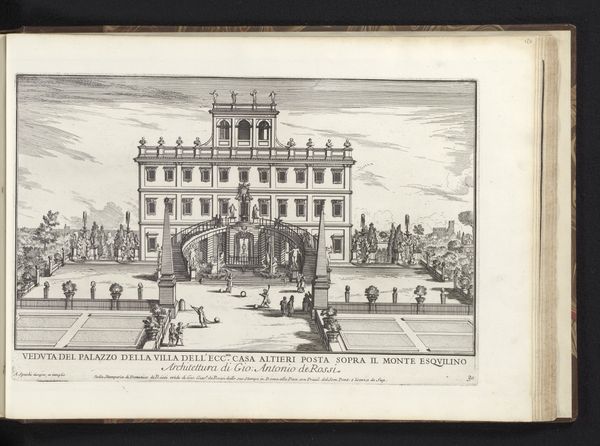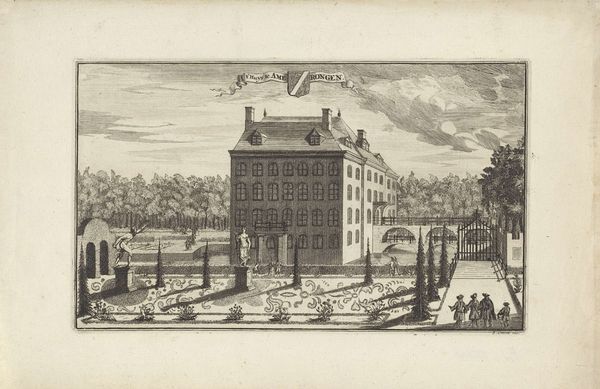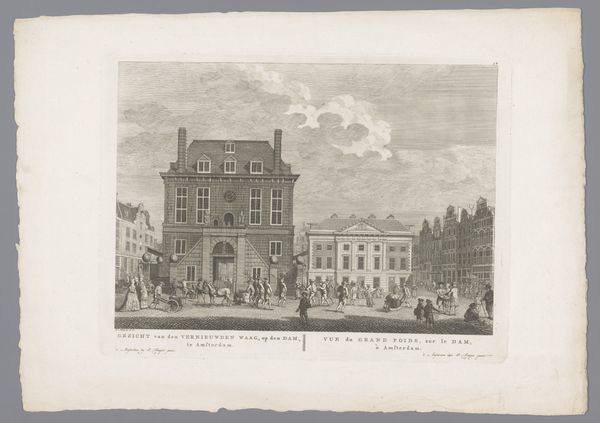
print, etching, engraving, architecture
#
dutch-golden-age
# print
#
pen sketch
#
etching
#
old engraving style
#
cityscape
#
engraving
#
architecture
Dimensions: height 185 mm, width 239 mm
Copyright: Rijks Museum: Open Domain
This etching, "Gezicht op het Stadhuis te Haarlem," was made by Romeyn de Hooghe, sometime between 1660 and 1700, using an etching technique. The etching process involves covering a metal plate with a waxy, protective ground. The artist then scratches an image into the ground with a needle. When the plate is immersed in acid, the exposed lines are bitten, creating grooves. Ink is then applied to the plate, filling the etched lines, and the surface is wiped clean. Finally, the plate is pressed onto paper, transferring the image. De Hooghe's choice of etching is significant. Unlike painting, printmaking allowed for the efficient reproduction and distribution of images. This speaks to the growing culture of commerce and communication in the Dutch Golden Age, and how it created a demand for images of city life. The clean, precise lines of the etching technique are well-suited to capturing the architecture of Haarlem's city hall, as well as the activities of daily life around it. Ultimately, this print reminds us that even seemingly straightforward depictions of urban life are deeply intertwined with the material conditions and economies of their time.
Comments
No comments
Be the first to comment and join the conversation on the ultimate creative platform.
